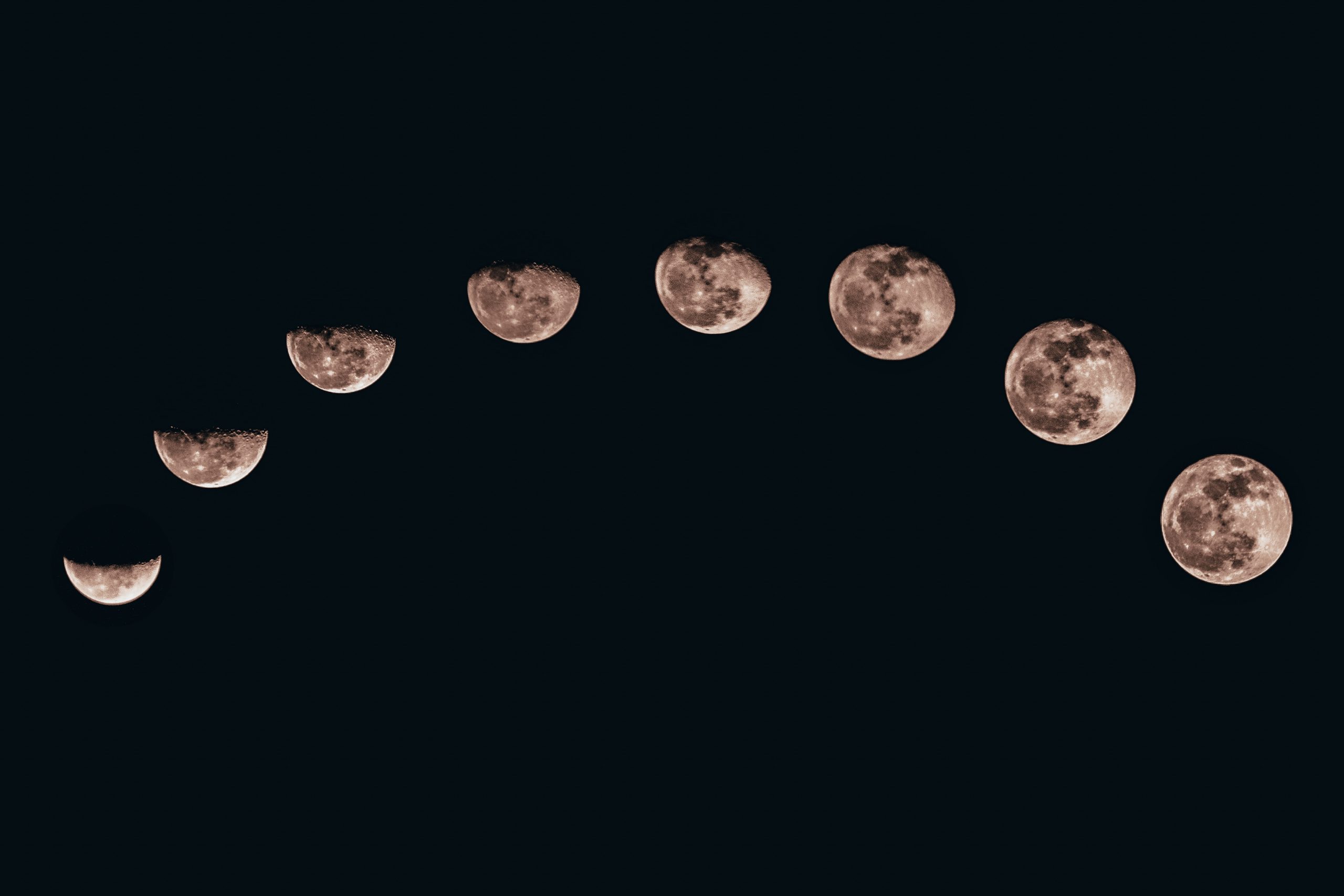Moon Phase Historical Data: Exploring the Cycles of Celestial Beauty
The moon has captured the fascination of humans for centuries. Its mysterious glow and ever-changing appearance have inspired countless myths, stories, and scientific inquiries. One aspect of the moon that has intrigued astronomers, astrologers, and curious individuals alike is its various phases. Moon phase historical data provides us with a wealth of information about the cycles of our celestial companion, allowing us to track its movements across time.
The Moon’s Phases: A Quick Overview
Before diving into the historical data, let’s briefly recap the moon’s phases. The moon goes through eight distinct phases, each lasting about 3.5 days:
- New Moon: The moon is not visible from Earth as it aligns with the sun.
- Waxing Crescent: A small sliver of the moon becomes visible.
- First Quarter: Half of the moon is visible, resembling a semicircle.
- Waxing Gibbous: More than half of the moon is visible, growing towards fullness.
- Full Moon: The entire face of the moon is visible, illuminating the night sky.
- Waning Gibbous: The moon begins to decrease in visibility after reaching fullness.
- Last Quarter: Half of the moon is visible in a semicircle shape, but on the opposite side of the first quarter.
- Waning Crescent: A small sliver of the moon is visible before it disappears, entering the new moon phase again.
Understanding the moon’s phases is key to appreciating the significance of moon phase historical data.
Why Is Moon Phase Historical Data Important?
Moon phase historical data allows us to track the moon’s patterns and better understand its influence on Earth. From ancient times to the present day, people have observed and recorded lunar phases. Here are some reasons why this historical data is valuable:
Astronomy and Navigation
For astronomers, moon phase historical data is crucial for determining the positions and movements of celestial bodies. By tracking the moon’s phases, astronomers can make accurate calculations and predictions, aiding in celestial navigation and understanding the cosmos.
Agriculture and Farming
Traditional farmers have long relied on moon phase data to optimize their planting and harvesting schedules. Lunar phases are believed to influence plant growth, with different phases being associated with specific farming activities. For example, planting seeds during the waxing moon and harvesting during the waning moon are commonly practiced agricultural traditions.
Human Behavior and Astrology
Astrologers and those interested in astrology often refer to moon phase historical data in their analyses. It is believed that the moon’s phase at the time of a person’s birth may have an influence on their personality characteristics and potential life events.
Tracking Moon Phase Historical Data
The recording and tracking of moon phase historical data stretch back thousands of years. Ancient civilizations, such as the Babylonians, Egyptians, and Mayans, were among the first to observe and document lunar phases. These early records were crucial for establishing calendars and predicting astronomical events.
Today, we have access to a wealth of moon phase historical data through various sources. Astronomical observatories, space agencies, and online platforms provide detailed records of moon phases dating back many centuries. Digitized records allow for easier analysis and comparison, aiding researchers in studying long-term lunar patterns and potential correlations with other events.
Data Presentation and Analysis
One common method of presenting moon phase historical data is through tables. These tables often include the date, time, and moon phase for specific periods. Let’s take a look at a simplified example:
| Date | Time | Moon Phase |
|---|---|---|
| January 1, 2000 | 19:00 | New Moon |
| January 2, 2000 | 10:30 | Waxing Crescent |
This tabular format allows researchers, enthusiasts, and anyone curious about the moon’s phases to easily access and interpret the data.
Unlocking the Secrets of the Lunar Cycle
Moon phase historical data is not only a collection of numbers; it holds the key to unlocking the secrets of the lunar cycle’s influence on our planet and the various aspects of human existence. From studying its impact on wildlife behaviors to exploring its significance in cultural and religious practices, moon phase historical data offers a window into the mesmerizing interplay between the moon and Earth.
So, the next time you gaze up at the night sky and marvel at the moon’s iridescent glow, remember that behind its beauty lies a story as ancient as time itself. Moon phase historical data invites us to embark on a journey of discovery, connecting us to our ancestors who gazed at the same celestial wonder and wondered, just as we do today.
Whether you’re an astronomer, a farmer, or simply someone who appreciates the beauty of the cosmos, exploring moon phase historical data is an enriching endeavor that opens our eyes to the interconnectedness of the universe.
Table of Contents
